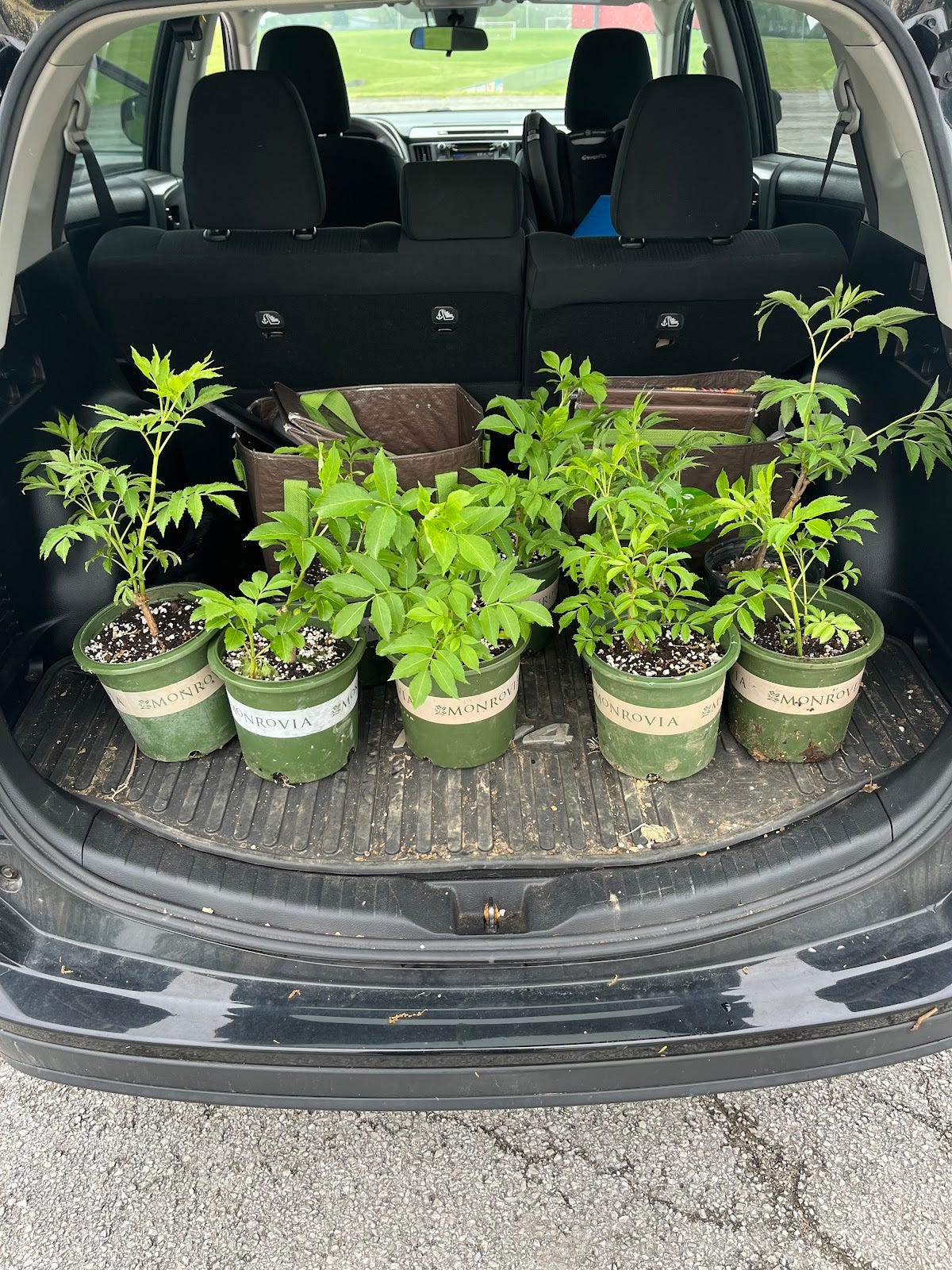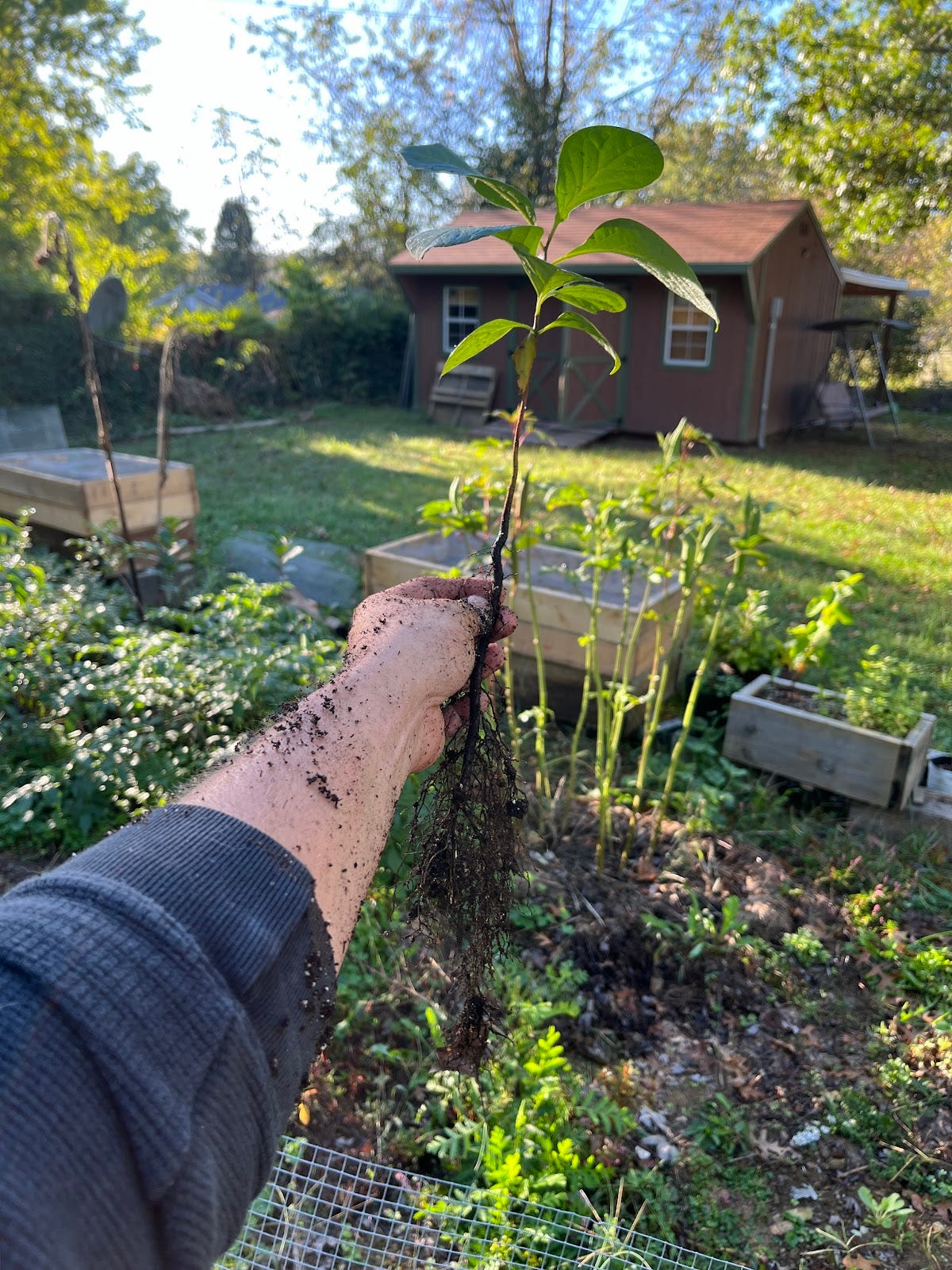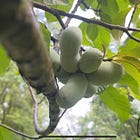“7) Blessed are those who trust in the Lord, whose trust is the Lord. 8) They shall be like a tree planted by water, sending out its roots by the stream…”
Jeremiah 17:7-8
“Transplanting may disturb, but it also gives a chance to grow stronger.”
— Anonymous
When it comes to getting plants off to a strong start in your garden, root health is everything. A plant with a well-established, healthy root system is far more likely to thrive long-term.
In this edition, we’re zooming in on how root health is impacted during the transplanting process—and how bareroot and potted plants differ in this critical moment.
Potted Plants: Convenience with Caveats
Potted plants are the go-to for many gardeners because they offer instant gratification—you can see exactly what you’re buying, and they often come already leafed out or even in bloom. However, when it comes to transplanting, root health can be a mixed bag.
Because potted plants have been growing in containers—sometimes for weeks or even months—their roots often fill the pot completely, circling around the inside. This is called root binding or becoming root bound. If not addressed during transplanting, these circling roots can continue growing in a spiral pattern in the ground, potentially strangling the plant over time or stunting its growth.
The transplant shock can also be more severe in potted plants if the roots are disturbed too much when loosening them or if the plant was already stressed from inadequate watering or fertilization during its time in the pot.
Best practice: Before planting, always check the root ball. Gently tease apart any circling roots or, in more extreme cases, make a few vertical cuts with a knife to encourage outward root growth.
Bareroot Plants: Slower Start, Stronger Finish
Bareroot plants arrive without soil, their roots exposed and dormant. This may seem like a disadvantage, but it can actually set the stage for superior root development.
Since bareroot plants haven’t been confined to a container, their roots retain a more natural structure. When planted correctly, they establish themselves quickly by extending into the surrounding soil without the memory of a pot’s shape.
Bareroot plants also experience less transplant shock—ironically—because they’re dormant at the time of planting. They “wake up” in their new environment, with their first roots growing directly into your soil, rather than adjusting from one medium to another.
However, bareroot plants do require a bit more care at the time of planting. Their roots must stay moist (but not soaked) until they’re in the ground, and they should be planted during the appropriate dormant season window (usually late fall through early spring, depending on your zone).
Best practice: Soak the roots in water for a few hours before planting. Be sure to spread the roots out naturally in the hole and avoid letting them bunch or bend.
The Takeaway
When it comes to root health during transplanting, bareroot plants often win the long game. They may not offer the instant gratification of potted plants, but they tend to establish deeper, stronger root systems and experience less transplant shock—especially if planted and cared for correctly.
Potted plants are great for convenience and mid-season planting, but be vigilant about root health. Check for circling or bound roots and take steps to address them before planting.
In short:
If you're planting in the dormant season and willing to prep properly, bareroot gives your plant the best start.
If you need flexibility or want a visual preview of the plant, potted can work well—with a little extra attention to the roots.
Stay tuned for the next edition in our series, I am so glad you are here.
Community Corner:
This section is all about you — your insights, feedback, and ideas. I love featuring your past comments and learning what’s resonating most. Your input plays a big part in shaping the future of this newsletter.
Looking ahead, I have three topic ideas in the works — and I’d love to know which one excites you most! Let me know what you'd like to see next.
Let me know which one you’d like to read next by casting your vote and/or leaving a comment—I always enjoy hearing your thoughts!
Crop Profile Directory
If you're just joining us — or if you enjoyed this issue and want to explore further — check out the three most popular crop profiles from our recent series. Take a look and let me know your thoughts!
Thank you for being part of this journey — exploring edible plants, sustainable practices, and the simple joy of nurturing local flora.
I can’t wait to hear your thoughts and ideas. I’ll see you back here next week!
Until then — happy planting,
Much love
Many blessings
Travis
P.S.
If you’re enjoying the newsletter and want to support its growth, I’d be truly grateful if you shared it with a friend, neighbor, or follower who might find it valuable.
Word of mouth is how this community grows — your recommendation could inspire someone else to start growing food and making a difference right where they are.








